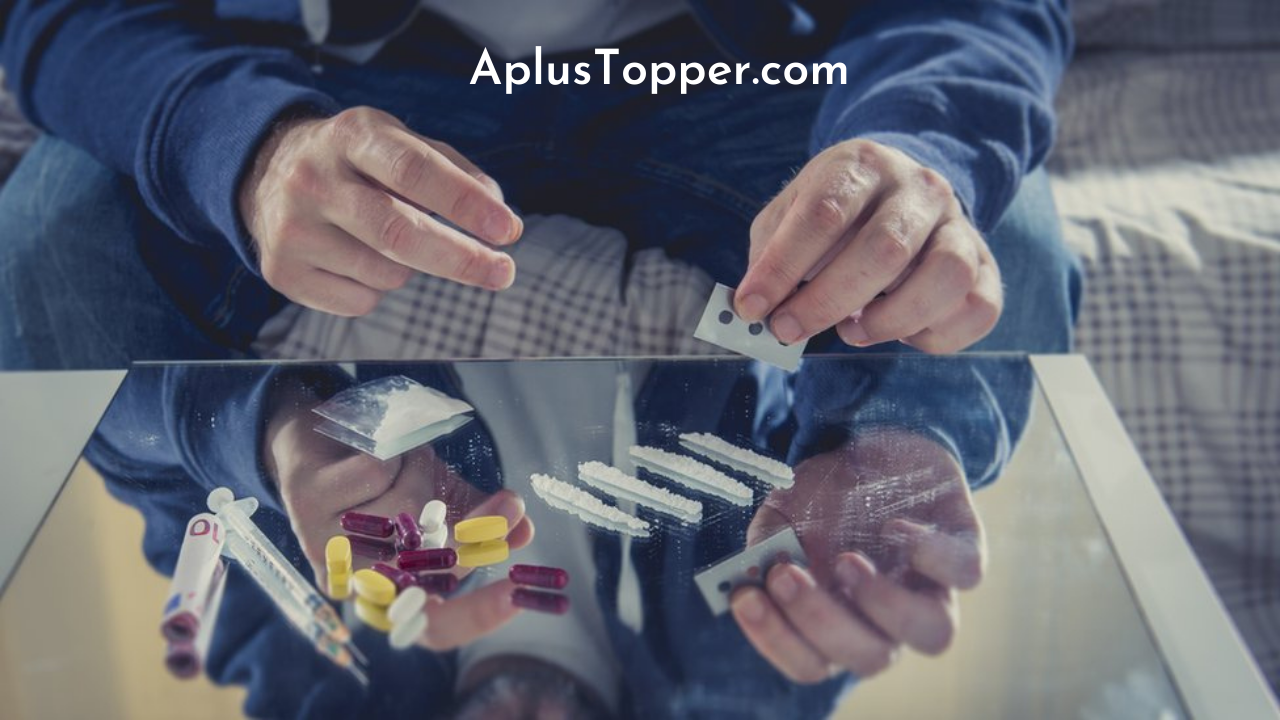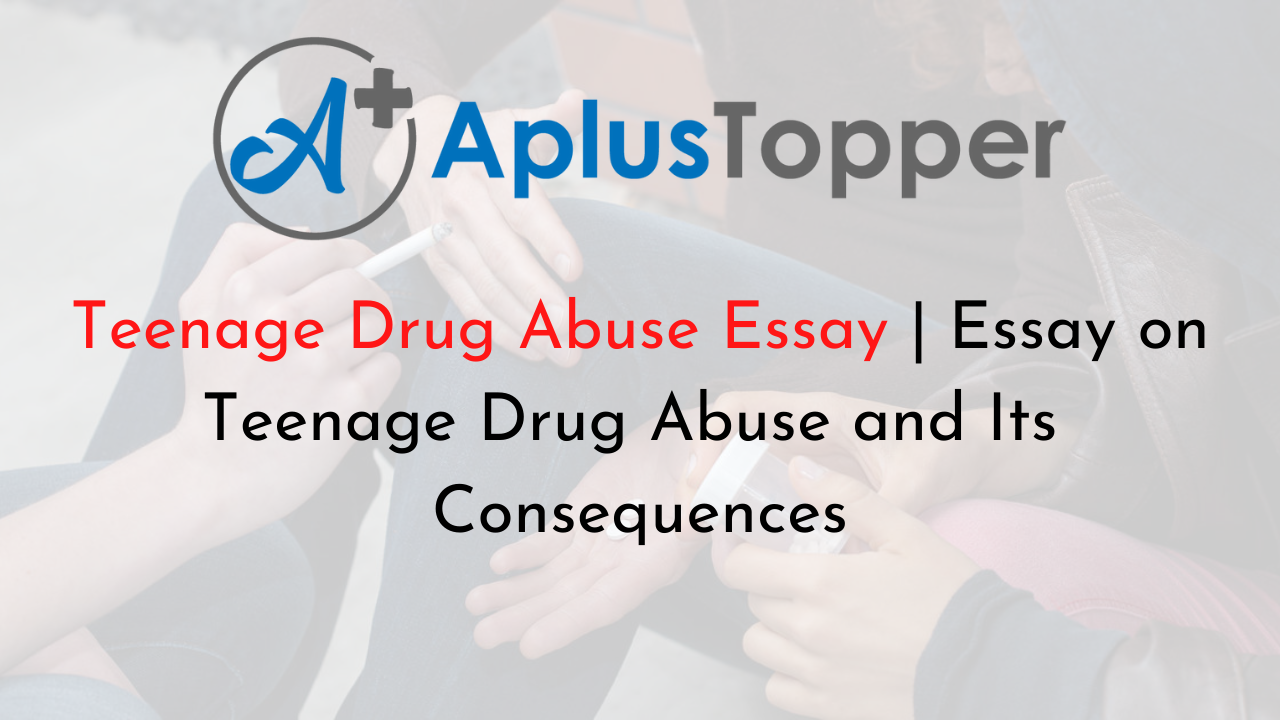Teenage Drug Abuse Essay: Drug abuse is a problem that affects many people worldwide, but it’s something that is often difficult to discuss with teens in your life. It’s important to make sure that this sensitive subject isn’t brought up as a blunt warning or too harshly, because the longer you wait to talk about it, the more likely it is for them to seek help from someone else. If you have addicted to drugs yourself, this essay explores the issue of drug abuse and its consequences. Read on about how drug addiction could change the course of your life and what risks you might face if you’re addicted to drugs.
You can also find more Essay Writing articles on events, persons, sports, technology and many more
- Teenage Drug Abuse and Its Consequences
- Signs of Drug Abuse in Teenagers
- Dangers Associated with Drugs
- Possible Life Course Outcomes of Teenage Drug Use
- Prevention and Intervention Policies
- Conclusion on Teenage Drug Abuse Essay
- FAQ’s on Teenage Drug Abuse
Teenage Drug Abuse and Its Consequences
The consequences of teenage drug abuse are often huge, as they affect the person’s life in many different ways. Teenagers who abuse drugs in their teens can suffer from permanent brain damage and other long-lasting physical effects that may lead to a lifetime of addiction and restrictions on their freedom.
Watch for the Signs of Drug Abuse
Drug addiction is a complex issue that can affect anyone. It can come in the form of mental, physical, and emotional changes which people often don’t recognize until it’s too late. The signs of addiction can be different for each person but there are certain behaviors to be aware of that may indicate drug abuse or addiction. In order to be certain that someone is suffering from drug abuse or addiction, look for the following behaviors:
- Having trouble getting to sleep, staying awake, or sleeping too much.
- Feeling restless and agitated
- Sweating and paranoia
- Impact on short-term memory.
- Feeling detached from others and unable to feel emotions
- Changes in mood, personality, and behavior
Regardless, the experience of suffering from drug addiction is extremely unpleasant. Some have even described it as just as strong as the desire to eat food or drink water.
Signs of Drug Abuse in Teenagers
Drug addiction is becoming a widespread problem in teenagers. Moreover, teenagers are the most vulnerable group in society. Addiction in this group has noticeable signs such as:
- Lack of personal hygiene: Drug addicts are often not motivated to take care of themselves, so they have no concern for their personal hygiene. They may neglect their appearance and hygiene in order to get high. In some cases, drug addicts may be too high on drugs to get out of bed.
- Neglect of responsibilities: The neglect of responsibilities among teen addicts is common. Many who are addicted to drugs have disrupted social lives, had poor attendance, and low grades. They are often easily distracted and have difficulty concentrating on the task at hand due to mental health issues that arise from their addiction.
- Missing school: Teen drug addiction and absenteeism is a growing problem for school districts across many countries. With the opioid crisis taking over, many students are struggling to make it to class each day. One of the goals of substance abuse treatment is to help get people back on track, and make sure they get the education they deserve.
- Missing homework assignments: Teenagers who are addicted to drugs have a hard time completing their homework assignments. Homework is an important part of the school day and it helps students understand course material and skills outside of class, and it can be difficult for those who struggle with addiction and abuse.
- Change in school performance: The National Institute on Drug Abuse found that when teenagers use drugs, their school performance can be negatively impacted. The study showed that in the past two decades, there has been a decrease in school performance and test scores for students who used drugs and alcohol during adolescence. For the study, researchers analyzed data from over 50,000 eighth-graders who participated in the Monitoring the Future survey between 1991 and 2016.
- Declining grades: Declining grades among teenage drug addicts is a common issue that needs to be addressed. This problem becomes more prevalent as the addiction progresses and becomes deeply rooted. As the addiction continues, it starts to take over the person’s life and they lose interest in anything other than drugs. The addict can no longer function properly at their job, school, or even at home. They may exhibit delinquent behavior such as stealing or may even resort to committing criminal activities.
- Social withdrawal: Teenagers who use drugs are more likely to withdraw socially from their peers, family and friends. This withdrawal can lead to a psychological addiction in which the drug addict will have a compulsive need to use the drug.
- Frequent absences from home: Drug addicts are more likely to be absent from home than teenagers who don’t use drugs. A study found that drug addicts were absent from school and at home an average of 7.61 days for each month between the time they turned 13 and the time they turned 18. By comparison, teens who don’t use drugs missed 3.84 days per month on average.
- Poor physical and or mental health: Poor physical and or mental health among teenage drug addicts is common. When a person becomes addicted to drugs, their body goes into overdrive. The person’s brain’s receptors become less perceptive to the drug, and they need more of it to feel the same high. They may also develop symptoms like paranoia, hallucinations, insomnia, weight loss and more.These symptoms can lead to more serious health problems like heart disease, stroke, and diabetes.
Withdrawal symptoms after stopping drugs include nausea and vomiting, tremors, insomnia, loss of appetite and depression.
Dangers Associated with Drugs
Drug abuse is widespread among teenagers all across the world. The number of teens who use drugs is rising dramatically, leading to an increased risk of addiction and overdose. Accidental drug deaths were the leading cause in 2016 for people aged 19-25. Parents and teachers need to take action against this issue, as well as develop preventative education programs that can help improve awareness about drugs and healthy living.
In the beginning, addicts may not notice the dangers of drugs as they are too focused on the feeling of pleasure that a drug provides. However, as the addiction progresses, these dangers become more and more apparent. One of the most dangerous side effects of drug use is overdose. This can happen when a person takes more of a substance than their body can handle or if they mix two or more substances together. Overdose can lead to death if not treated quickly enough. Moreover, drugs affect not only the user but also those around them including friends and family members who have to deal with their loved one’s addiction. For example, children of addicts may be neglected or abused while addicted teens might be unsupportive to their parents and siblings.
Possible Life Course Outcomes of Teenage Drug Use
There are several possible life course outcomes for teenage drug use. These include mental and physical health problems, drug addiction, homelessness, incarceration, and school dropouts. Trauma and disease in childhood can also affect an individual’s life span. For example, individuals who have experienced abuse are more likely to have a shorter life span than those who were not abused. Such conditions are often accompanied by poor physical health and poor mental health. Poor physical health is, in part, due to neglect, lack of exercise and a poor diet. Mental health problems can include depression, anxiety and post-traumatic stress disorder as well as symptoms of withdrawal.
Prevention and Intervention Policies
Some of the most effective policies for reducing drug abuse are through prevention and intervention. In addition to increasing the visibility of the problem, prevention and intervention policies do a number of other things. The most important are:
- They have the potential to affect behavior by influencing attitudes and perceptions about drug use
- They can increase users’ desire for their health and well being
- They can increase the perception of risk for potential users
- They can act as a catalyst for change
- Finally, they can engage and create awareness among the public about the problem.

Conclusion on Teenage Drug Abuse Essay
There are many different types of drugs that people can abuse including alcohol, opioids, marijuana, cocaine, amphetamines and more. Some people choose to abuse one type of drug while others might try multiple types at once. Regardless, drugs are a common problem in today’s society. People who are addicted to drugs often neglect themselves or others in order to get their next fix which is very dangerous for the addict and those around them. The key takeaway of this essay is that drugs are not just an individual’s problem – it affects everyone around them as well. People who have addicted loved ones often feel helpless because they cannot help their loved one get better. If left untreated or no intervention is done, it can lead to addiction, health problems, and eventually death.
FAQ’s on Teenage Drug Abuse
Question 1.
What causes drug abuse among teenagers?
Answer:
Drug abuse among teenagers does not occur on its own. It is the result of numerous causes. Some of these causes include: teenagers being in a rebellious phase of life, bearing feelings of isolation, wanting to fit in or just feeling different, peer pressure, wanting and trying to fit in with the popular crowd.
Question 2.
What kind of drugs are teenagers abusing?
Answer:
Teenagers are experimenting with drugs like marijuana, amphetamines, barbiturates and hallucinogenic drugs.
Question 3.
What are the effects of drug abuse?
Answer:
Drug abuse can lead to serious and life threatening consequences. These include drug dependence, physical and mental health problems, and psychosis and even death.
Question 4.
What are the signs of drug abuse?
Answer:
Drug abusers may care less about hygiene, appearance and how they present themselves. They may be unkempt and have poor physical and mental health.
